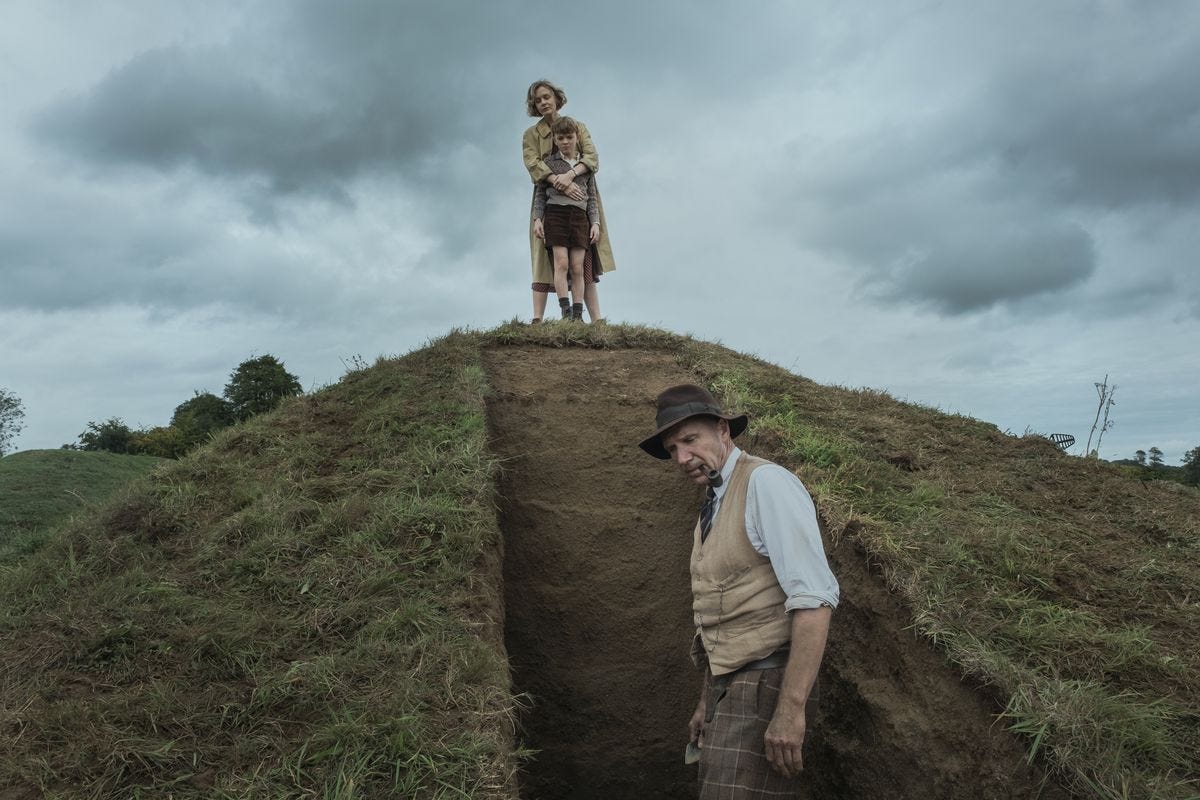A Fiennes Romance
Unearthing “The Dig” from the Netflix Original burial mound

It’s the weird reality of our video-on-demand age that good movies get bankrolled by streaming services that then promote them for a few weeks before tossing them into the back-list bargain bin. But they’re still good movies, and you should see them.
For instance: Maybe you saw “The Dig” when Netflix premiered it earlier this year. Maybe not. It’s still there, lurking, and it has two of my favorite actors and maybe yours – Carey Mulligan and Ralph Fiennes – in a drama about nothing more nor less than friendship.

They don’t make enough movies about friendship. I guess it’s obvious why. Narrative thrives on conflict, not comity, and if the two main characters are of the opposite sex, there’s the issue of sexual tension, flirtation, the final clinch. To neutralize all that yet still retain our interest, a division of some sort has to be introduced to defuse any notion of romance. The differential of age, for instance, in the marvelous “Mrs. Palfrey at the Claremont” (2005, and a subject for another day), or age and race, as in “Driving Miss Daisy.”
In “The Dig,” it’s social class – British social class, with which one does not mess. Edith Pretty is a posh widow in 1939 England, living with her young son in a sprawling mansion on the edge of the Suffolk downs, in the country’s rural southeast. Basil Brown is a local villager, a self-taught archaeologist and a taciturn loner. Mrs. Pretty is wealthy; Brown brings to mind that wonderful line from a different British classic (“I Know Where I’m Going,” 1945), “not poor – they just haven’t any money.”
Ty Burr’s Watch List is a reader-supported newsletter. Both free and paid subscriptions are available. Those who want to support my work are encouraged to take out a paid subscription.
But there’s something ancient and immense buried under those downs that the widow senses is there and that Mr. Brown wants to help her dig up (for a price); the story is based closely on the real people and events of the Sutton Hoo excavations that unearthed – well, watch the movie. Mulligan plays Mrs. Pretty with a curiosity and warmth behind those sad almond eyes; the character’s quite brittle and literally entitled but the farthest thing from a snob. Fiennes can be a playful and expansive performer (see “The Grand Budapest Hotel,” 2014), but he pulls himself in like a tortoise here, and only Brown’s X-ray ability to see what’s under the dirt brings the character out of his shell. These are two actors most of us intuitively trust and may even feel a kind of movie love for, so well and thoughtfully (and sometimes fearlessly) have they earned our respect by respecting what they do.

No sex, though, and not just because they’re British. To hot things up a little, there’s a side affair between an unhappily married lady archeologist (the ubiquitous Lily James) and Mrs. Pretty’s strapping nephew (Johnny Flynn) – the film’s screenplay was written by the real archeologist’s nephew in an interesting case of family-laundry airing. But the relationship between the widow and the digger becomes charming, touching, and meaningful not because of repressed passions but because they’re the only two people in the movie moved by the larger mystery of things. Other characters show up, from nearby museums and then national ones, but where they see holdings, Brown and Mrs. Pretty see history, its sweep and its absurd brevity, and they each see that the other sees it. “The Dig” is an intensely pleasurable experience, no more so than when dealing with the admiration two people, separated by everything except a vision, might have for each other. It isn’t a romance, but it is, in a very real sense, a love story.
If you enjoyed this edition of Ty Burr’s Watch List, please feel free to share it with friends.
Or subscribe. Thank you!





